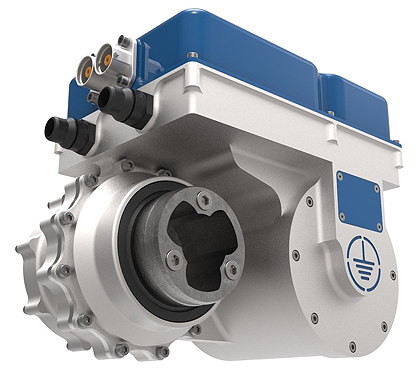UK project aims for ‘world’s most power-dense PM motor’

A UK company is developing what it claims will be the world’s most power-dense permanent magnet electric motor. Norfolk-based Equipmake has teamed up with the Bristol-based additive manufacturing organisation HiEta Technologies to develop the next-generation motor with a target peak power density of at least 20kW/kg – more than four times that of a conventional motor. The project is being supported by a grant from the UK government’s innovation funding body, Innovate UK.
Codenamed Ampere, the new motor will draw on Equipmake’s expertise in motor design and HiEta’s knowledge of thermal engineering and additive manufacturing to produce an efficient, but low-cost, electric motor with a peak power output of 220kW at 30,000rpm and a weight of less than 10kg, giving it a peak power density of at least 20kW/kg. By comparison, today’s best permanent magnet motors struggle to exceed 5kW/kg. The first prototypes are due to be running within 12 months.
The key to the motor’s performance is its combination of an advanced motor design with additive manufacturing, allowing its metal structure to be 3D printed, rather than milled from a solid billet.
This brings many advantages. First, metal is put only where it is needed. Second, thermally efficient thin walls and optimised fine surface details can be combined with the motor’s structure, replacing multi-part assemblies with a single complex architecture said to have an “exceptional” cooling ability. The lightweight machine has a low inertia and allows for high rotational speeds.
This approach not only reduces the amount of high-strength alloys needed in the motor’s construction, but also reduces the need for expensive active materials – the magnets – helping to keep costs down.
Equipmake already produces one of the world’s most power-dense automotive electric motors which delivers a peak power of 125kW at 12,000rpm and weighs just 14kg, giving it power density of almost 9kW/kg. This motor uses a spoke architecture to maximise cooling.
“Equipmake has made major leaps in electric motor performance in recent years with our APM range of advanced motors offering class-leading power densities thanks to their compact, lightweight designs,” says managing director, Ian Foley. “Additive manufacturing is the key to unlocking the next step change and we are delighted to be partnering with HiEta on Ampere.

“This exciting project has the potential to totally change our concept of what an electric motor can offer – and with such a huge amount of performance in a such a small package, at as low a cost as possible, this motor is set to further revolutionise e-mobility, whether that’s in automotive or aerospace,” he continues. “We are grateful to Innovate UK for their support and are looking forward to getting the very first Ampere prototypes up and running very soon.”
Andy Jones, HiEta’s innovation programme manager, adds the new motor “provides the opportunity to apply both HiEta’s thermal management expertise and complex, thin-walled structure manufacture enabled by additive manufacture to electric motor design to realise ambitious power densities. We typically reduce the size of thermal management components by five times compared with conventional techniques which will allow next-generation heat transfer features to be integrated into the rotor, stator and electronics cooling.
“In addition, the freedoms of additive manufacture will be used to optimise structural performance. We are integrating these benefits with Equipmake’s advanced electric motor design from the ground up and are looking forward to manufacture and test in the near future.”
At the end of last year Equipmake opened a new factory in Snetterton, Norfolk, where it designs, tests and manufactures products ranging from motors to complete electrified platforms for the automotive and aerospace sectors. These include an integrated electric bus chassis and a range of motors used in its EBus chassis. Four of these 220kW motors will also be used to power UK sportscar-maker Ariel’s planned Hipercar, which is expected to reach 60mph (96km/h) in 2.4 seconds, 150mph (241km/h) in 7.8s, and will have a top speed of 160mph (257km/h).





